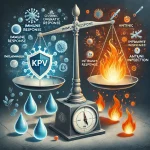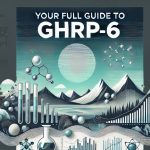If you’re a researcher looking for ways to (or even accelerate) your subject’s healing factor without catching any nasty risks or side effects, chances are you have heard of the Wolverine stack before.
Whether through the news, online groups, or word of mouth, the Wolverine stack has gained attention for its potential healing benefits. This stack consists of two peptides: BPC 157 and TB 500, both naturally found in the human body and are closely associated with accelerating healing processes.
Before we begin exploring the benefits of stacking these peptides, let’s first break them down individually and see what they have to offer:
What is BPC 157?
Body Protective Compound 157, or just BPC 157, is a synthetic compound designed to replicate a naturally occurring peptide found in our gut and is commonly associated with faster injury recovery – earning it the moniker the Wolverine peptide.
As such, BPC 157 influences our gut-brain axis, which regulates many of our biological and hormonal processes. BPC 157 is mainly used for any gut/stomach-related problems, accelerates injury healing and recovery, and may promote lean muscle tissue.
What is TB 500?
TB 500 is also a synthetic version of a naturally occurring peptide known as Thymosin Beta 4, and is commonly associated with promoting overall health.
This peptide features many regenerative qualities including the ability to repair damaged tissue, promote cellular health, and prevent inflammation — key components to accelerating healing.
TB 500 reduces the setbacks associated with critical injuries and instead promotes faster recoveries in torn muscle tissue, ligaments, and tendons.
Furthermore, TB 500 improves the strength and flexibility of these new cells and even encourages them to become stronger. This possibly helps prevent injuries from occurring in the first place.
Benefits of Stacking TB 500 with BPC 157
What Does TB 500 Do?
https://www.facebook.com/groups/sarms.peptides.nootropics/permalink/1502333087288750
Due to their synergistic nature, both peptides complement each other so much that they are frequently stacked together to accelerate healing.
Why? Because while they can be very effective on their own, they yield better and faster results when combined. Furthermore, while both peptides overlap in effects, they work through different pathways and have distinct mechanisms of action.
Below are some of the research-proven effects of both TB 500 and BPC 157:
Wound Healing
In a 2007 animal study investigating the healing effects of BPC 157 on ileoileal anastomosis (a surgery that connects two parts of your small intestine) in rats, researchers discovered that those treated with the peptide had their wounds healed better compared to those not receiving the treatment.
In an in-vitro study published in 2011, researchers took fibroblasts (cells located in your Achilles tendon) from rats and dipped them in solutions containing either BPC 157 or without. While BPC 157 did not increase the fibroblasts’ strength, it did promote healing better than non-treated cells due to the presence of more growth hormone receptors.
For TB 500, a 2010 animal study concluded that this peptide may help improve and accelerate collagen structure properties – a factor that can improve wound healing while reducing any scarring.
In a 2010 clinical trial determining the effect of thymosin on venous ulcers (poor blood flow in the leg veins), the researchers discovered that a 0.03% dose of thymosin beta 4 (exact doses are unknown) improved wound healing rate in about 25% of the subjects, helping them achieve complete wound healing within three months.
In simpler terms, these studies suggest that both peptides have a beneficial role in wound healing, and may be even more potent when used together.
Brain-Related Injuries
Studies also suggest that both BPC 157 and TB 500 may have a hand in healing brain-related injuries.
For physical injuries, BPC 157 is shown to promote tissue and nerve healing in animals and protect the brain from insulin overdose-induced seizures.
According to a 2010 experiment, the heads of mice were hit by a falling weight and were administered BPC 157 either before or immediately after the injury.
The researchers found that BPC 157 reduced the severity of these injuries and improved brain swelling — an indicator that the body’s healing process is at work.
For TB 500, studies suggest that thymosin beta 4 can promote nerve cells to become more “responsive” to these brain-related injuries as they can activate oligodendrocytes – cells that keep neurons healthy.
According to a 2013 comparative study, TB 500 helped protect brain cells, promote new blood vessel growth in injured parts of the brain, and improve post-recovery movement, coordination, learning, and memory abilities.
Additionally, both TB 500 and BPC 157 may potentially help with strokes.
According to studies, TB 500 promotes blood vessels and neural growth, while BPC 157 focuses on helping repair the brain and reduce swelling after a stroke.
Administration
BPC 157 is available in capsules, nasal sprays, and lyophilized form by subcutaneous injections while TB 500 can be injected and taken orally, although there is limited stock.
This is important to know as there are advantages and disadvantages to each administration type.
If you want quick and effective results, subcutaneously injecting peptides in lyophilized form should do the trick.
However, reconstituting them with bacteriostatic water and into injectables takes some time and attention. There’s also the added stigma of injecting them into a subject’s body, so it evens out.
Capsules, tablets, and nasal sprays, however, are easier to take physically and mentally – you just pop a pill, call it a day, and wait for the results.
However, most peptides (excluding BPC 157 since they’re made in the gut) may not be as potent as other administration forms because your liver will filter them before they enter your circulation.
This process is called the “first-pass” effect and the only way to go around this is to take the peptide in higher doses, which makes them more expensive to take.
Dosage
There is no recommended dosage in this peptide stack; the dosage you use will entirely depend on how fast you want your results to happen. However, we did find some dosages researchers took during their studies.
For BPC 157, animal studies suggest common research dosages are around 1 μg/kg to 10 ng/kg in rats.
For TB 500, initial doses would be around 4-10 mg for 1-2x per week, according to dosing recommendations circulating online.
Note: If these are all confusing to you, we recommend checking out our peptide reconstitution guide for more detailed info.
BPC 157 and TB 500 Side Effects
Both peptides are not currently approved by the FDA and are prohibited for human use by the World Anti-Doping Agency (WADA). However, according to research, both peptides are considered generally safe and well-tolerated by their subjects.
TB 500 is safe to use based on conducted animal and human studies while BPC 157 is shown to be very safe for treating gastro-intestinal problems in rats.
However, potential side effects may still occur, and some studies report that common side effects may include:
- Temporary redness, irritation, or pain at the injection site (also known as post-injection pain in the fitness world)
- Mild fatigue
- Mild headaches, dizziness, and nausea
- Blood pressure fluctuations from BPC 157
- Diarrhea
For BPC 157, there are two more things to consider before using it for research:
- Anti-inflammatory steroids may potentially clash with BPC 157’s healing ability.
- BPC 157 is rumored to cause cancer growth due to its angiogenic properties; more studies are needed to conclude this.
Verdict: Should You Stack Them Together?
If you would love to heal like Wolverine (or as closely as humanly possible), then this peptide stack is for you as both BPC 157 and TB 500 help promote overall health.
Furthermore, it’s light years safer than alternative drugs such as steroids.
If you’re considering using the Wolverine stack in your research, it may be even more beneficial to stack it with an HGH-releasing peptide like CJC-1295.
Stacking these substances together could potentially enhance an already effective healing stack into a powerhouse, allowing you to heal like a beast.
As always, if you have questions, don’t hesitate to comment down below! Peptides, as of the moment, are like the Wild West of medicine; the comment box is the best way to reach us and get answers to any of your questions.







